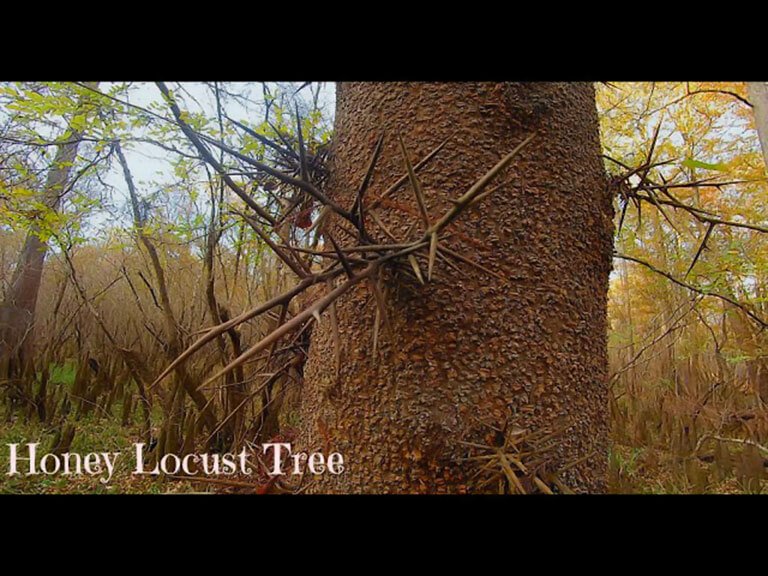Thornless Honey Locust Tree Problems: Quick Solutions
Thornless Honey Locust trees may face issues like pests, disease, and improper watering. Regular monitoring and timely intervention can help prevent these problems.
Thornless Honey Locust trees are popular for their elegant appearance and minimal maintenance. These deciduous trees provide shade and are ideal for urban landscapes. Despite their hardy nature, they can encounter various problems that affect their health and growth. Common issues include pests like aphids and spider mites, as well as diseases such as leaf spot and root rot.
Proper care is essential to keep these trees thriving. Understanding their needs and recognizing early signs of trouble can ensure a healthy, vibrant tree. By addressing potential problems promptly, you can enjoy the beauty and benefits of a Thornless Honey Locust for years to come.
Introduction To Thornless Honey Locust Trees

The Thornless Honey Locust Tree is a popular choice for many gardens. It offers beauty and functionality. This tree is known for its unique features and low maintenance. However, it is important to understand its potential problems.
Characteristics
The Thornless Honey Locust Tree has several distinct characteristics:
- Height: Can grow up to 30 feet tall.
- Leaves: Delicate, fern-like foliage.
- Bark: Smooth and light brown in color.
- Flowers: Small, yellow-green flowers appear in spring.
- Fruit: Produces long pods in late summer.
These features make it a visually appealing tree. Its leaves provide nice shade during hot days.
Popularity And Uses
The Thornless Honey Locust Tree enjoys wide popularity for various reasons:
- Used in urban landscapes due to its size.
- Great for parks and large yards.
- Provides excellent shade.
- Attracts wildlife, such as birds.
This tree is often chosen for its resilience. It adapts well to different soil types. Its low maintenance needs appeal to busy homeowners.
Many landscapers recommend it for its beauty and utility. Understanding its issues helps in making better choices.
Common Issues With Thornless Honey Locust Trees
Thornless Honey Locust trees are popular for their beauty and shade. They can face several problems that affect their health. Understanding these issues helps in caring for your tree.
Pests
Pests can harm Thornless Honey Locust trees. Here are some common pests:
- Locust Borer: This beetle can weaken the tree.
- Spider Mites: These tiny pests suck plant juices.
- Scale Insects: They create a sticky residue on leaves.
Signs of pest problems include:
- Discolored leaves.
- Visible insects on branches.
- Sticky substance on surfaces.
Diseases
Thornless Honey Locust trees can suffer from various diseases. Common diseases include:
| Disease | Description |
|---|---|
| Leaf Spot | Causes brown spots on leaves. |
| Root Rot | Weakens roots due to excess moisture. |
| Powdery Mildew | White powdery substance on leaves. |
Look for these signs:
- Wilting leaves.
- Leaf drop.
- Fungal growth on branches.
Environmental Stress
Environmental factors can stress Thornless Honey Locust trees. Common stressors include:
- Drought: Lack of water can cause leaf drop.
- Extreme Temperatures: Hot or cold weather affects growth.
- Soil Conditions: Poor soil can limit nutrient uptake.
Signs of environmental stress:
- Brown or curled leaves.
- Stunted growth.
- Increased susceptibility to pests and diseases.
Pest Problems And Management
The Thornless Honey Locust Tree is a beautiful addition to any landscape. However, it can face various pest problems. Managing these pests is crucial for the tree’s health and longevity. Understanding common pests helps in taking effective action.
Identifying Common Pests
Several pests may attack the Thornless Honey Locust Tree. Here are some of the most common:
- Locust Borer: A beetle that tunnels into the trunk.
- Leafcutter Bees: These bees cut leaves to build nests.
- Spider Mites: Tiny pests that suck plant juices.
- Scale Insects: They appear as small bumps on stems.
Each pest has unique signs. Look for damage on leaves and bark. Monitor your tree regularly. Early detection is vital for effective control.
Effective Pest Control Strategies
Controlling pests involves various methods. Here are some effective strategies:
| Control Method | Description |
|---|---|
| Manual Removal | Handpick pests from the tree. |
| Insecticidal Soap | Apply soap to kill soft-bodied insects. |
| Neem Oil | Natural oil that disrupts pest growth. |
| Beneficial Insects | Introduce ladybugs to control aphids. |
Follow these steps for successful pest management:
- Inspect your tree regularly.
- Identify the pest causing damage.
- Choose an appropriate control method.
- Monitor the tree after treatment.
Maintain tree health through proper watering and fertilization. A healthy tree can resist pests better. Stay vigilant for signs of infestation.
Disease Dilemmas: Identification And Solutions
The Thornless Honey Locust Tree is a popular choice for many gardens. It provides shade and beauty. However, it can face various diseases that affect its health. Identifying these diseases early is crucial. Here, we explore common problems and their solutions.
Fungal Infections
Fungal infections are a common issue for the Thornless Honey Locust. They can cause various symptoms. Here are some key fungal diseases to watch for:
| Disease | Symptoms | Solutions |
|---|---|---|
| Leaf Spot | Brown or black spots on leaves. | Remove affected leaves. Use fungicides. |
| Root Rot | Wilting and yellowing leaves. | Improve drainage. Avoid overwatering. |
| Powdery Mildew | White powdery substance on leaves. | Increase airflow. Apply fungicides. |
Bacterial Infections
Bacterial infections can also affect Thornless Honey Locust Trees. These infections may spread quickly. Here are some common bacterial problems:
- Bacterial Leaf Spot: Causes dark spots with yellow halos.
- Fire Blight: Leads to wilting and blackened branches.
To combat these infections:
- Prune infected branches promptly.
- Disinfect tools to prevent spreading.
- Apply appropriate bactericides.
Preventive Measures
Prevention is key to keeping your Thornless Honey Locust healthy. Here are effective strategies:
- Choose Healthy Plants: Purchase from reputable nurseries.
- Maintain Proper Watering: Water deeply but infrequently.
- Improve Soil Health: Add organic matter to the soil.
- Regular Inspections: Check trees for early signs of disease.
Taking these preventive measures can help your tree thrive. A healthy tree can resist diseases better.
Environmental Stress Factors
The Thornless Honey Locust Tree faces various environmental stress factors. These factors can affect its health and growth. Understanding these issues helps in proper care and maintenance.
Drought Stress
Drought stress occurs when the tree lacks water. This condition can lead to:
- Wilting leaves
- Poor growth
- Increased susceptibility to pests
Signs of drought stress include:
- Brown leaf tips
- Leaf drop
- Stunted branches
Watering during dry spells is crucial. Deep watering encourages strong root systems.
Soil Conditions
Soil quality impacts the health of the Thornless Honey Locust Tree. Poor soil conditions can cause:
- Poor drainage
- Compaction
- Nutrient deficiencies
Ideal soil conditions should be:
| Soil Type | Drainage | Nutrients |
|---|---|---|
| Loamy soil | Good | Balanced |
| Sandy soil | Excellent | Needs amendment |
| Clay soil | Poor | High nutrients |
Testing soil quality helps in providing necessary amendments.
Weather Impact
Extreme weather can stress the Thornless Honey Locust Tree. Factors include:
- High winds
- Heavy rain
- Frost
These conditions can cause:
- Broken branches
- Root damage
- Increased disease risk
Protecting the tree from harsh weather is essential. Proper pruning and placement can help.
Pruning Practices For Health And Vigor
Pruning the Thornless Honey Locust Tree helps maintain its health. Regular pruning boosts growth and improves its appearance. Proper techniques ensure the tree thrives.
Best Times To Prune
Choose the right time for pruning to maximize benefits. The best periods are:
- Late Winter: Before new growth starts.
- Early Spring: Just before leaf buds open.
- Summer: For light trimming and shaping.
Avoid pruning in late fall. It may weaken the tree before winter.
Pruning Techniques
Use effective techniques for pruning. Follow these steps:
- Remove Dead Wood: Cut branches that are dead or diseased.
- Thin Out Crowded Branches: This allows sunlight and air to reach all parts.
- Cut at the Right Angle: Aim for a 45-degree angle to promote healing.
- Use Clean Tools: Keep pruning shears sharp and disinfected.
These practices enhance the tree’s structure and vigor. Regular maintenance leads to a healthier tree.
Soil And Nutrition For Optimal Growth
The Thornless Honey Locust Tree thrives in well-drained soil. Proper soil and nutrition are vital for healthy growth. This tree prefers certain conditions to flourish. Understanding these conditions helps in maintaining its beauty.
Soil Testing
Soil testing is essential for determining nutrient levels. It helps identify any deficiencies or excesses. Follow these steps for effective soil testing:
- Collect soil samples from different areas.
- Use a clean tool to avoid contamination.
- Send samples to a lab or use a home testing kit.
- Analyze results for pH and nutrient levels.
Ideal soil pH ranges from 6.0 to 7.5. Adjust soil pH if necessary. Use lime to raise pH or sulfur to lower it.
Fertilization Needs
Fertilization supports the tree’s growth. Different stages require different nutrients. Here is a guide for fertilization:
| Growth Stage | Recommended Fertilizer | Application Frequency |
|---|---|---|
| Young Trees | 10-10-10 NPK | Every 6-8 weeks |
| Mature Trees | 5-10-10 NPK | Once a year in spring |
Use fertilizers that provide essential nutrients:
- Nitrogen (N): Promotes foliage growth.
- Phosphorus (P): Supports root development.
- Potassium (K): Enhances overall health.
Always follow the recommended application rates. Over-fertilizing can harm the tree.
Preventive Care And Regular Maintenance
Taking care of your Thornless Honey Locust tree is essential. Regular maintenance prevents many problems. This tree can thrive with the right attention. Here are some tips for effective care.
Monitoring Tree Health
Regularly check your tree for signs of stress. Look for:
- Discoloration of leaves
- Unusual leaf drop
- Visible pests or insects
- Cracks in the bark
Use these methods to monitor health:
- Inspect leaves and branches weekly.
- Observe growth patterns over the seasons.
- Check soil moisture regularly.
Early detection helps manage problems before they escalate.
Routine Care Tips
Follow these simple care tips to keep your tree healthy:
| Care Task | Frequency |
|---|---|
| Watering | Every week during dry spells |
| Fertilizing | Once in spring |
| Pruning | Annually in late winter |
| Pest Inspection | Monthly |
Keep the area around the tree clear. Remove debris and weeds. This reduces the risk of pests and diseases.
Mulching helps retain moisture. Apply a layer around the base of the tree. Use organic mulch for best results.
Healthy trees are less likely to face problems. Regular care ensures your Thornless Honey Locust remains vibrant.
Frequently Asked Questions
What Are Common Issues With Thornless Honey Locust Trees?
Common issues include pests, disease, and environmental stress, leading to yellowing leaves or stunted growth.
How To Treat Thornless Honey Locust Pests?
Use insecticidal soap or neem oil to manage pests like aphids and scale on your thornless honey locust.
Why Are My Thornless Honey Locust Leaves Yellowing?
Yellowing leaves may indicate nutrient deficiencies, poor drainage, or root rot. Check soil conditions to diagnose.
Can Thornless Honey Locust Trees Withstand Drought?
These trees are drought-tolerant, but prolonged drought can stress them. Regular watering helps maintain health.
How To Prune Thornless Honey Locust Trees?
Prune during late winter or early spring, removing dead or crossing branches to promote better airflow and growth.
Conclusion
Thornless Honey Locust trees can face various challenges, from pests to environmental stress. Understanding these issues is crucial for maintaining their health. Regular monitoring and proper care can help prevent potential problems. By being proactive, you can ensure your trees thrive and enhance your landscape for years to come.






